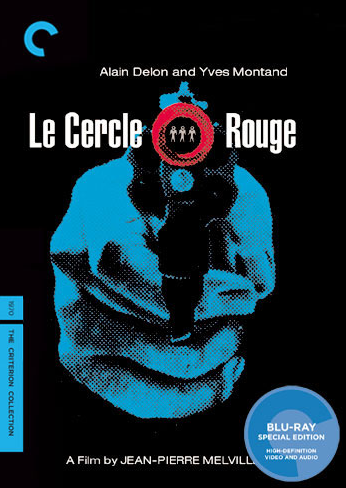Cause and Effects: Le Cercle Rouge, Unbroken

On paper, Jean-Pierre Melville’s police thriller Le Cercle Rouge (1970) was surely nothing special—borderline banal, even. But in an interview that’s part of Criterion’s new Blu-Ray edition, the film’s assistant director recalls that Melville assured him, “on va dilater.” We’ll stretch it out. And Melville did, marvelously.
Melville described Le Cercle Rouge as “the story of an encounter and a rendezvous.” A bad guy on the lam (Gian Maria Volonte) stows himself away in the trunk of a car that happens to belong to another gangster (Alain Delon) who’s fresh out of jail; they team up and recruit a former cop (Yves Montand) to help them pull off a jewelry heist in Paris, all the while being pursued by the detective (Andre Bourvil) who let Volonte’s character get away in the first place.
The intricacy of this tale is not in the script but in the imagery, and the aforementioned assistant director, Bernard Stora, is right on when he calls Le Cercle Rouge “pure mise-en-scene.” It’s all about the camera angles, the lighting, the sets, the actors’ movements. These professionals on both sides of the law cut their way through the frame with gestures that are economical and precise, more rituals than expressions. Their individuality barely punches its way to the surface.
As Sergio Leone did in his savvy Westerns, Melville approaches the accoutrements of the genre with a certain self-awareness: the guns, the tailored suits, and the trench coats are front and center. Melville—who wore a Stetson and drove a big American car, and was born Jean-Pierre Grumbach—would pinch the brim of Delon’s hat before the cameras started rolling to make sure it looked just right.
Peel away the sets and wardrobe, though, and the visuals have an endoskeleton that’s no less elegant. Melville’s unusual attention to geometry, his sense of the axes along which on-screen movement happens, is especially pertinent to this story of circling and ultimately colliding paths. The title translates as “the red circle”—which is explained, in a supposedly Buddhist axiom that runs before the credits sequence, as the place where men come together to meet their fate.
Melville illustrates this idea metaphorically, in an overhead shot of a pool cue bumping billiard balls around a table. But also watch the way a car tearing through the streets of Marseilles contrasts with a train speeding from right to left and a police dragnet advancing—diagonally, purposefully—across a field. You get the sense that if all those important movements left a visible trace on your screen, the resulting tangle would make sense. Melville is building a layer of intersecting routes that doesn’t exist in the script. Talk about dilating.
LE CERCLE ROUGE WILL BE AVAILABLE FROM THE CRITERION COLLECTION NEXT TUESDAY, APRIL 12. FOR MORE INFORMATION, VISIT CRITERION’S WEBSITE.






